What is a Radiator Flush?
It’s a more comprehensive process than just a coolant flush. Your radiator is a component that keeps the engine cool. With time, with thousands of cycles of sending the coolant to the engine and getting it back from the engine, it can accumulate debris. This debris can include particles from the coolant itself, rust, and sediment, which can build up inside the radiator. A radiator flush involves thoroughly draining the coolant, cleaning out any build-up, and then refilling with fresh coolant. This process ensures that your engine’s cooling system operates efficiently, free from any blockages or contaminants that could hinder its performance.
When to Get a Radiator Flush?
Recognizing when your car needs a radiator flush is key to maintaining its health and performance. Ignoring the signs can lead to bigger issues down the road. So, how do you know it’s time for that all-important car radiator service? Here are a few signs that signal it’s time:
- Radiator Leak
- Discolored Coolant
- Low Coolant Levels
- Strange Noises from Radiator
- Poor Heater Performance
- Coolant Light is On
- Sludge in the Radiator
- Temperature Fluctuations
- Extended Time Since Last Coolant Flush
Keeping an eye out for these signs and acting promptly can save you from costly repairs and ensure your vehicle runs smoothly.
Potential Risks of Skipping Radiator Flushes
This buildup can lead to several issues:
- Reduced Efficiency: The debris can insulate the heat transfer surfaces inside the radiator, making it less efficient at cooling the engine. This can cause the engine to run hotter than normal.
- Clogging: Over time, the buildup can become significant enough to clog the small passages inside the radiator. This restricts the flow of coolant, further reducing the radiator’s ability to cool the engine.
- Corrosion and Damage: Some types of debris, especially if they are acidic or corrosive, can damage the radiator from the inside. This can lead to leaks and a reduction in the structural integrity of the radiator.
- Overheating: The most serious consequence of a debris-filled radiator is overheating of the engine. If the radiator cannot adequately remove heat, the engine temperature can rise to dangerous levels, potentially causing engine damage.
To prevent these issues, it’s important to maintain the radiator properly. This includes regular flushing and cleaning to remove any built-up debris, checking for leaks and damage, and ensuring the coolant is at the correct level and is replaced according to the manufacturer’s recommendations. If the radiator is too clogged or damaged, it may need to be replaced to ensure the efficient operation of your vehicle’s cooling system.
Step-by-Step Process of a Radiator Flush
Understanding the process of a radiator flush helps you appreciate the value it brings to your vehicle’s health. Here’s a look at how professionals typically perform a radiator flush:
- Initial Inspection: The service starts with a thorough inspection of the radiator and cooling system to check for leaks or damage.
- Engine Cooling: Before beginning, the technician ensures the engine is completely cool to avoid any risk of injury or damage.
- Draining the Coolant: The old coolant is drained out from the radiator. This involves carefully opening the drain plug and letting the old fluid flow out into a designated container.
- Flushing the System: After draining, a special radiator flush solution is introduced into the system. This solution helps in breaking down and removing any debris, rust, or sediment.
- Refilling with New Coolant: The radiator is then refilled with fresh coolant. This new coolant is usually a mix of antifreeze and water, suitable for your vehicle’s specifications.
- System Check and Leak Test: After the refill, the system is checked for leaks and proper circulation. The technician ensures that the radiator cap and all connections are secure.
- Proper Disposal: The old coolant and flush solution are disposed of responsibly, following environmental safety standards.
This process of a radiator flush, often referred to as a coolant flush or radiator refill, ensures that your vehicle’s cooling system is clean, efficient, and free from potential damage-causing contaminants.
Choosing the Right Coolant for Your Vehicle
Selecting the appropriate coolant is a critical decision for the health of your engine. The right coolant ensures optimal engine temperature regulation and prevents corrosion within the cooling system. Each vehicle has specific requirements, often outlined in the manufacturer’s guide, dictating whether an ethylene glycol or a propylene glycol-based coolant is suitable. A top-grade coolant, matched to your vehicle’s needs, not only enhances the effectiveness of a radiator flush but also ensures smoother operation and prolonged engine life.
Radiator Flush Cost Estimates
When considering a radiator flush for your vehicle, it’s practical to have an idea about the cost involved. In Dubai, the price for a professional radiator flush, which includes draining the coolant, cleaning the system, and refilling with the appropriate coolant, typically ranges from 200 to 400 AED. This cost can vary depending on your vehicle’s model and the type of coolant it requires. A well-executed coolant change can prevent costly repairs down the line, making it a wise and economical choice for any car owner who values their vehicle’s performance and reliability.
Final Words
In summary, understanding and maintaining your vehicle’s cooling system through regular radiator flushes is crucial for its optimal performance and longevity. Not only does it keep your engine running smoothly, but it also prevents long-term damage, ensuring your vehicle remains a reliable companion on the road. Remember, investing in timely coolant changes and services is an investment in the health and efficiency of your car, a small step that goes a long way in safeguarding your journey.
